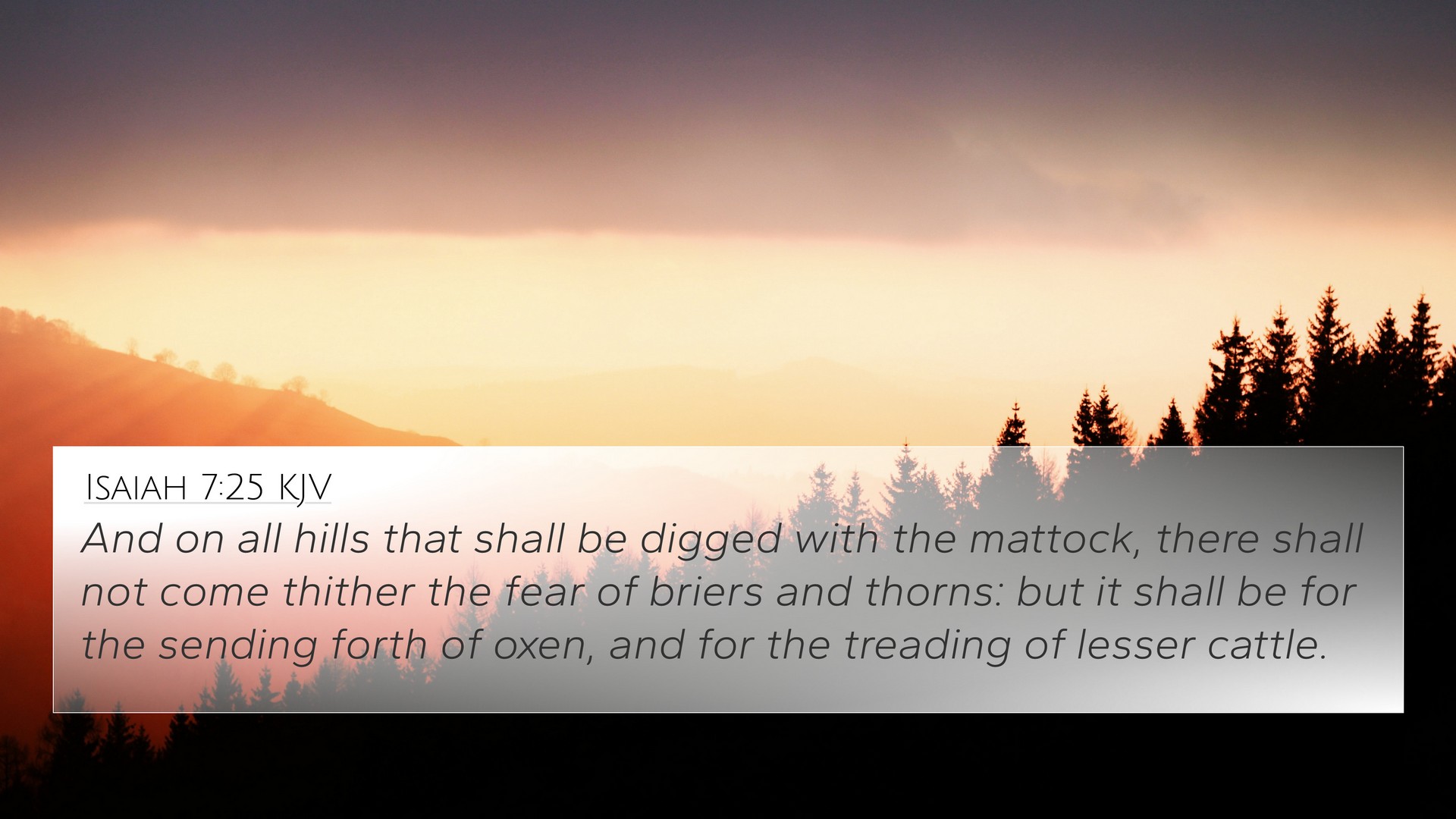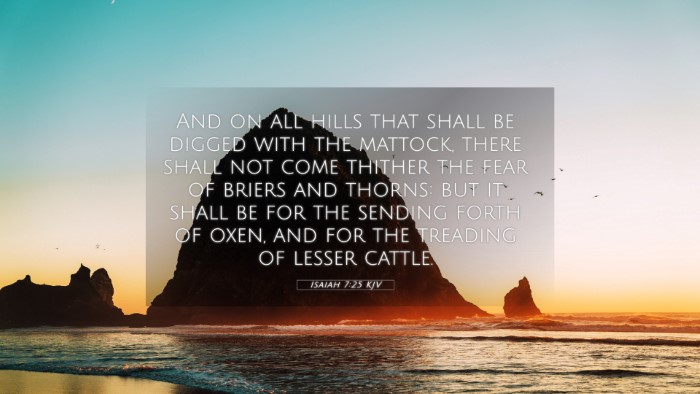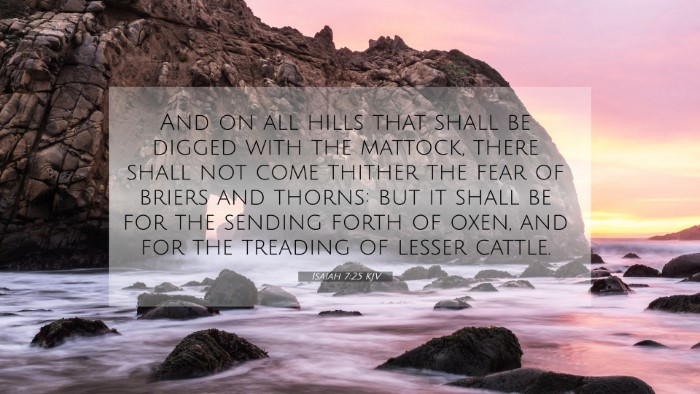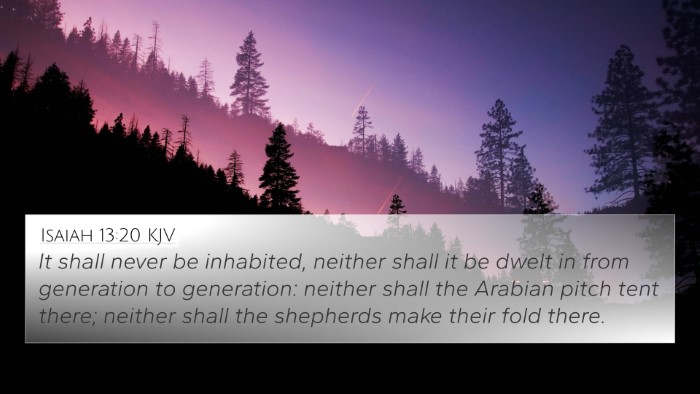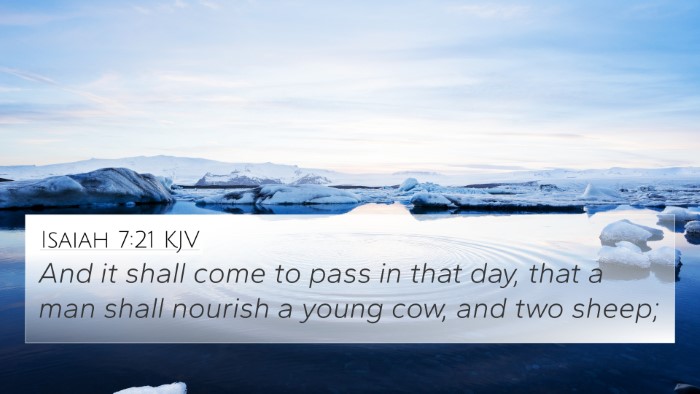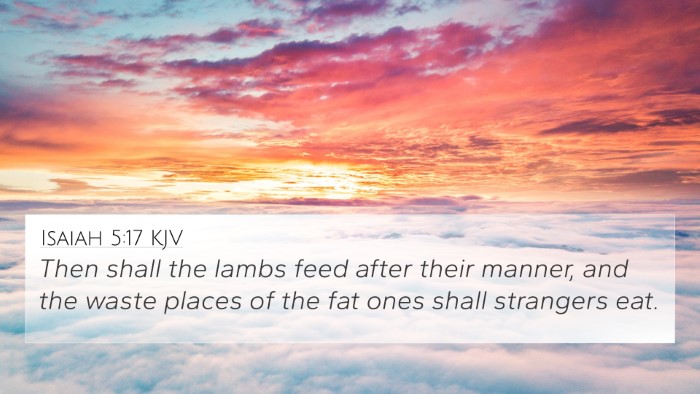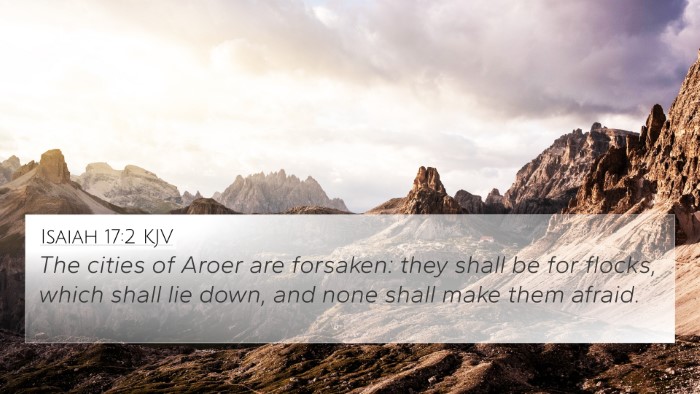Understanding Isaiah 7:25
Verse: Isaiah 7:25 - "And on all hills that shall be digged with the mattock, there shall not come thither the fear of briers and thorns: but it shall be for the sending forth of oxen, and for the treading of lesser cattle."
This verse captures a prophetic declaration regarding the land of Judah, emphasizing the shift from desolation to fruitful and productive use of land, in contrast to the severe judgment that had befallen Israel. Key insights from public domain commentaries provide depth to this understanding.
Commentary Insights
Matthew Henry's Commentary
Henry interprets this verse as a reassurance to God’s people that despite impending judgments and destruction, there will come a time when the land will once again prosper. The hills that were once seen as cursed by thorns and briers will become sites of agricultural productivity. This speaks to divine restoration and redemption.
Albert Barnes' Notes
Barnes elaborates on the physical transformation of the land. He suggests that the absence of “the fear of briers and thorns” denotes a return to security and cultivation. Farmers will once again thrive as they are freed from the pressures and fears of ruin. Barnes highlights the symbolic transition from judgment to peace.
Adam Clarke's Commentary
Clarke views this verse as a metaphorical representation of hope. The "mattock," a farming tool, indicates human effort in cultivating the land. However, the absence of thorns signifies that God's grace will make this labor fruitful. This points to an overarching theme of hope for Israel, amidst their trials and tribulations.
Thematic Connections
This verse not only stands alone but also possesses thematic connections and parallels with various other scriptures. Here are some notable cross-references that elucidate these themes:
- Isaiah 32:15-18 - Discusses the transformation of desolation into a fruitful land.
- Isaiah 35:1-2 - Portrays the desert rejoicing and blossoming, a direct parallel to restoration themes.
- Joel 2:21-24 - Speaks of the restoration of the land after a time of suffering and loss.
- Hosea 2:21-23 - Represents a prophetic promise of restoration and productivity of the land.
- Matthew 13:7-8 - Jesus' parable of the sower alludes to fruitful ground, contrasting with unproductive soil.
- Galatians 6:7-8 - Highlights the law of sowing and reaping, relating to the agricultural metaphor in Isaiah 7:25.
- Revelation 21:1-4 - Foretells a new heaven and earth, reinforcing the theme of restoration and hope.
Connecting the Dots: Biblical Cross-References
Through the study of Isaiah 7:25, we can gain insights into the myriad of connections in scripture. Here are some tools and methods for further exploration of cross-referencing Biblical texts:
- Bible Concordance - Utilize a concordance to find specific verses related to themes of restoration and cultivation.
- Cross-reference Bible study - Engage in a methodical study by comparing passages that speak to God’s promises of revitalization.
- Scriptural cross-referencing - Use cross-referencing tools to uncover deeper meanings and contextual connections between verses.
- Comparative Bible verse analysis - Analyze similarities and differences in the portrayal of land and blessing across various books.
Conclusion: The Hope Embedded in Isaiah 7:25
Isaiah 7:25 serves as a powerful reminder of hope and divine promise. The transformation from fearsome realities of thorns to productive landscapes symbolizes a future where God’s people can live in peace and abundance. By engaging with cross-referencing tools and resources, we can unlock further understanding and insights across scripture, reaffirming the interconnectedness of God’s message to humanity.
